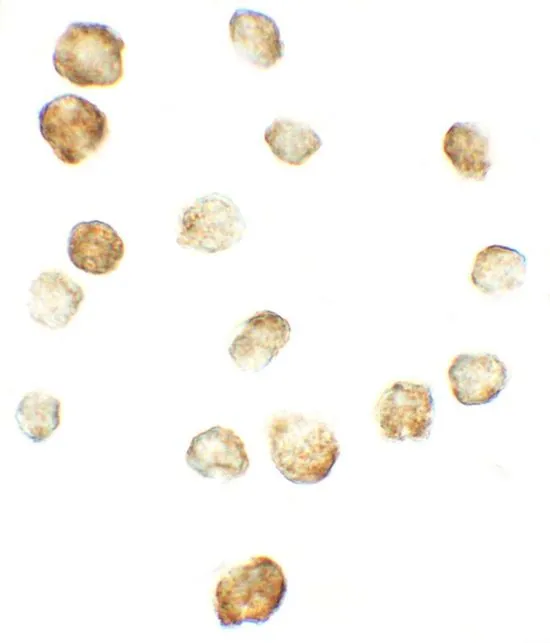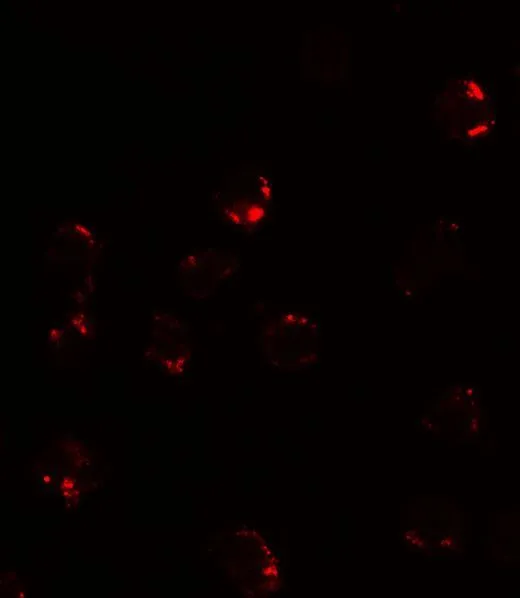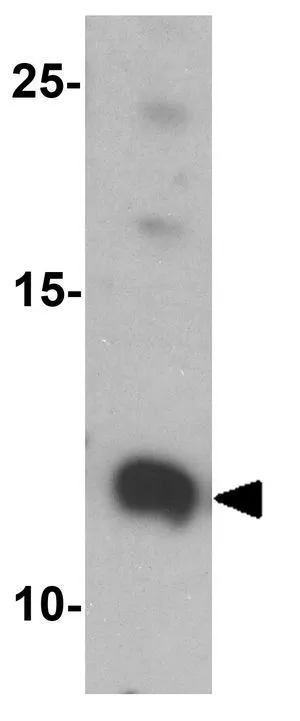
ICC/IF analysis of A431 cells using GTX31576 FKBP12 antibody. Working concentration : 5 microg/ml
FKBP12 antibody
GTX31576
ApplicationsImmunoFluorescence, Western Blot, ELISA, ImmunoCytoChemistry
Product group Antibodies
TargetFKBP1A
Overview
- SupplierGeneTex
- Product NameFKBP12 antibody
- Delivery Days Customer9
- Application Supplier NoteWB: 1 - 2 microg/mL. ICC/IF: 5 microg/mL. *Optimal dilutions/concentrations should be determined by the researcher.Not tested in other applications.
- ApplicationsImmunoFluorescence, Western Blot, ELISA, ImmunoCytoChemistry
- CertificationResearch Use Only
- ClonalityPolyclonal
- Concentration1 mg/ml
- ConjugateUnconjugated
- Gene ID2280
- Target nameFKBP1A
- Target descriptionFKBP prolyl isomerase 1A
- Target synonymsFKBP-12, FKBP-1A, FKBP1, FKBP12, PKC12, PKCI2, PPIASE, peptidyl-prolyl cis-trans isomerase FKBP1A, 12 kDa FK506-binding protein, 12 kDa FKBP, FK506 binding protein 1A, 12kDa, FK506 binding protein12, FK506-binding protein 1, FK506-binding protein 12, FK506-binding protein 1A, FK506-binding protein, T-cell, 12-kD, FKBP12-Exip3, PPIase FKBP1A, calstabin-1, immunophilin FKBP12, protein kinase C inhibitor 2, rotamase
- HostRabbit
- IsotypeIgG
- Protein IDP62942
- Protein NamePeptidyl-prolyl cis-trans isomerase FKBP1A
- Scientific DescriptionThe protein encoded by this gene is a member of the immunophilin protein family, which play a role in immunoregulation and basic cellular processes involving protein folding and trafficking. The protein is a cis-trans prolyl isomerase that binds the immunosuppressants FK506 and rapamycin. It interacts with several intracellular signal transduction proteins including type I TGF-beta receptor. It also interacts with multiple intracellular calcium release channels, and coordinates multi-protein complex formation of the tetrameric skeletal muscle ryanodine receptor. In mouse, deletion of this homologous gene causes congenital heart disorder known as noncompaction of left ventricular myocardium. Multiple alternatively spliced variants, encoding the same protein, have been identified. The human genome contains five pseudogenes related to this gene, at least one of which is transcribed. [provided by RefSeq, Sep 2008]
- Storage Instruction-20°C or -80°C,2°C to 8°C
- UNSPSC12352203






![IHC-P analysis of human colon adenocarcinoma tissue using GTX84492 FKBP12 antibody [3B3]. Antigen retrieval : Heat-induced epitope retrieval by 10mM citrate buffer, pH6.0, 100oC for 10min.](https://www.genetex.com/upload/website/prouct_img/normal/GTX84492/GTX84492_2791_IHC-P_w_23061420_798.webp)
![WB analysis of various samples using GTX03193 FKBP12 antibody [GT1281]. Dilution : 1:1000 Loading : 25microg per lane](https://www.genetex.com/upload/website/prouct_img/normal/GTX03193/GTX03193_12_WB_w_23053123_533.webp)
